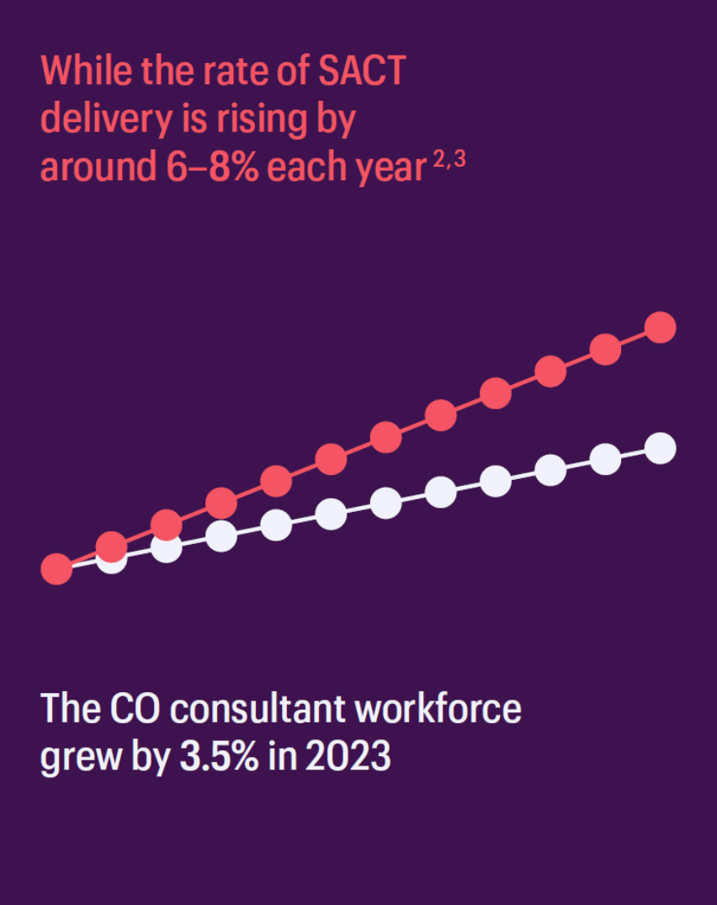
Clinical oncology census reports
Our census report presents a comprehensive picture of the clinical oncology workforce each year, and enables us to speak decisively about the issue.
LEARN MOREThis year’s clinical oncology workforce census shows growing delays for patients trying to access critical NHS services. These delays are the direct result of severe workforce shortages, due to demand for services outstripping consultant growth.
Download the report

0%
Increase in SACT treatments
While the number of SACT treatments is rising by approximately 7% annually, the consultant workforce grew by only 3.5% in 2023.
0%
Shortfall of clinical oncology consultants
There is a 15% shortfall of clinical oncology consultants (185 doctors).
0%
Increased shortfall by 2028
Without further action this shortfall is forecasted to increase to 21% (325 doctors) by 2028.
0%
Expressing concern about patient safety
Over 8 in 10 cancer leaders (85%) expressed concern that workforce shortages were impacting patient safety
As a result of these shortfalls:
Patients in 43% of cancer centres are experiencing weekly delays to radiotherapy, compared to 22% in 2022. Patients in half (47%) of cancer centres are facing weekly delays to start SACT.
Every service leader reported concerns that workforce shortages were impacting staff morale and burnout.
This has a clear impact with earlier retirement - the average age that clinical oncologists left the workforce in 2023 was just 54, compared to 57 in 2022.
Patients in 43% of cancer centres are experiencing weekly delays to radiotherapy, compared to 22% in 2022. Patients in half (47%) of cancer centres are facing weekly delays to start SACT.
Every service leader reported concerns that workforce shortages were impacting staff morale and burnout.
This has a clear impact with earlier retirement - the average age that clinical oncologists left the workforce in 2023 was just 54, compared to 57 in 2022.
11
Download the latest report
See our latest updates, policy reports and initiatives.
News & policy